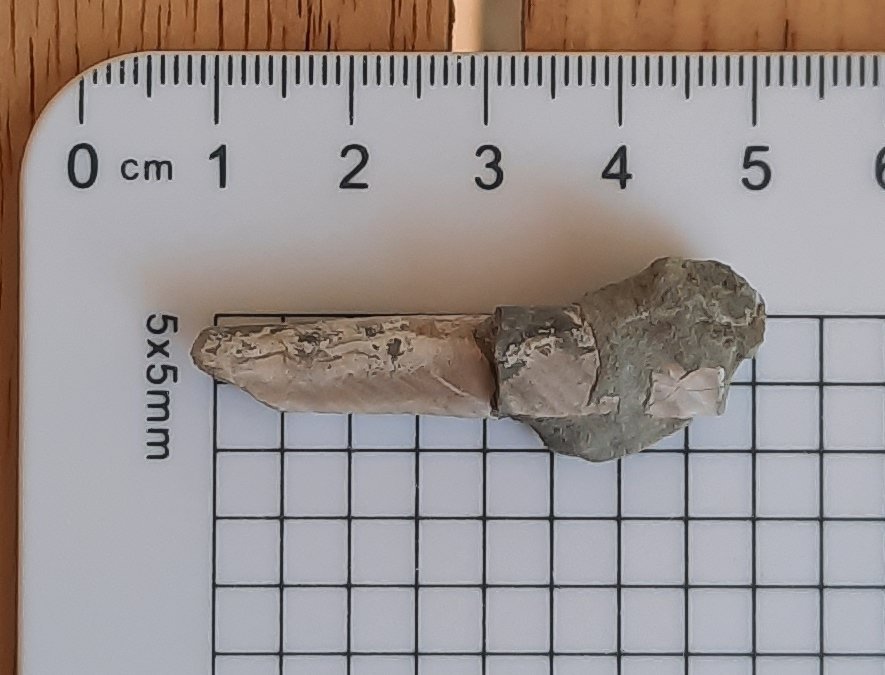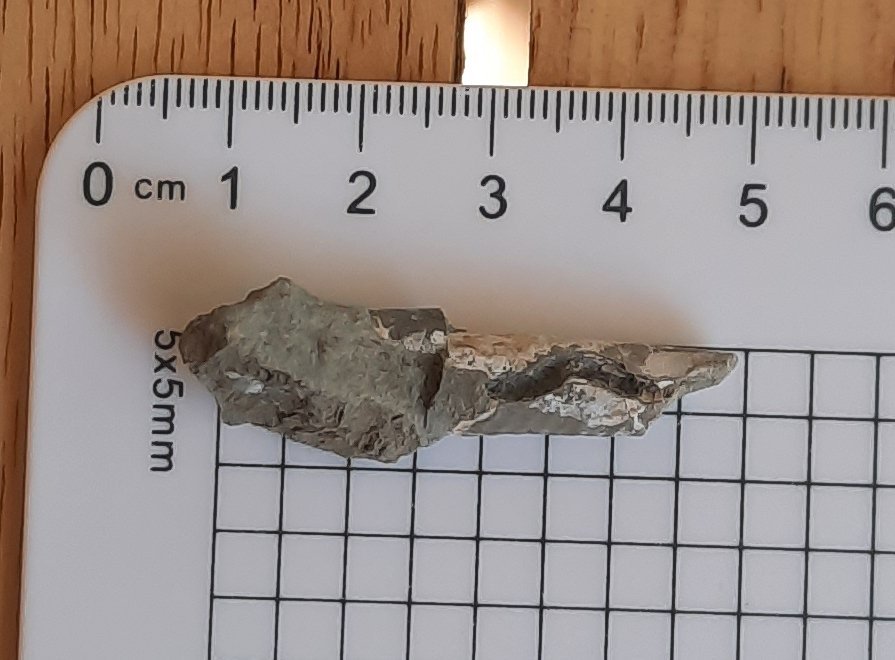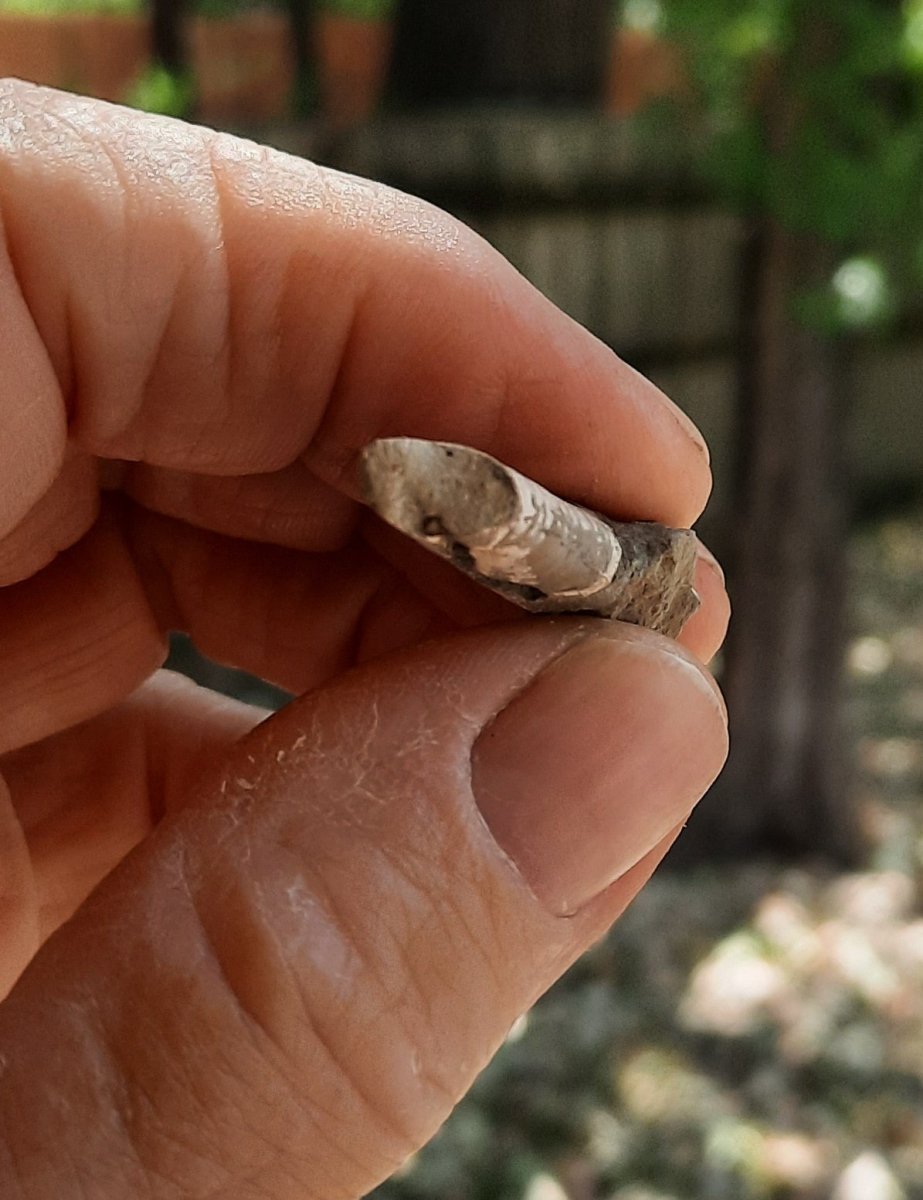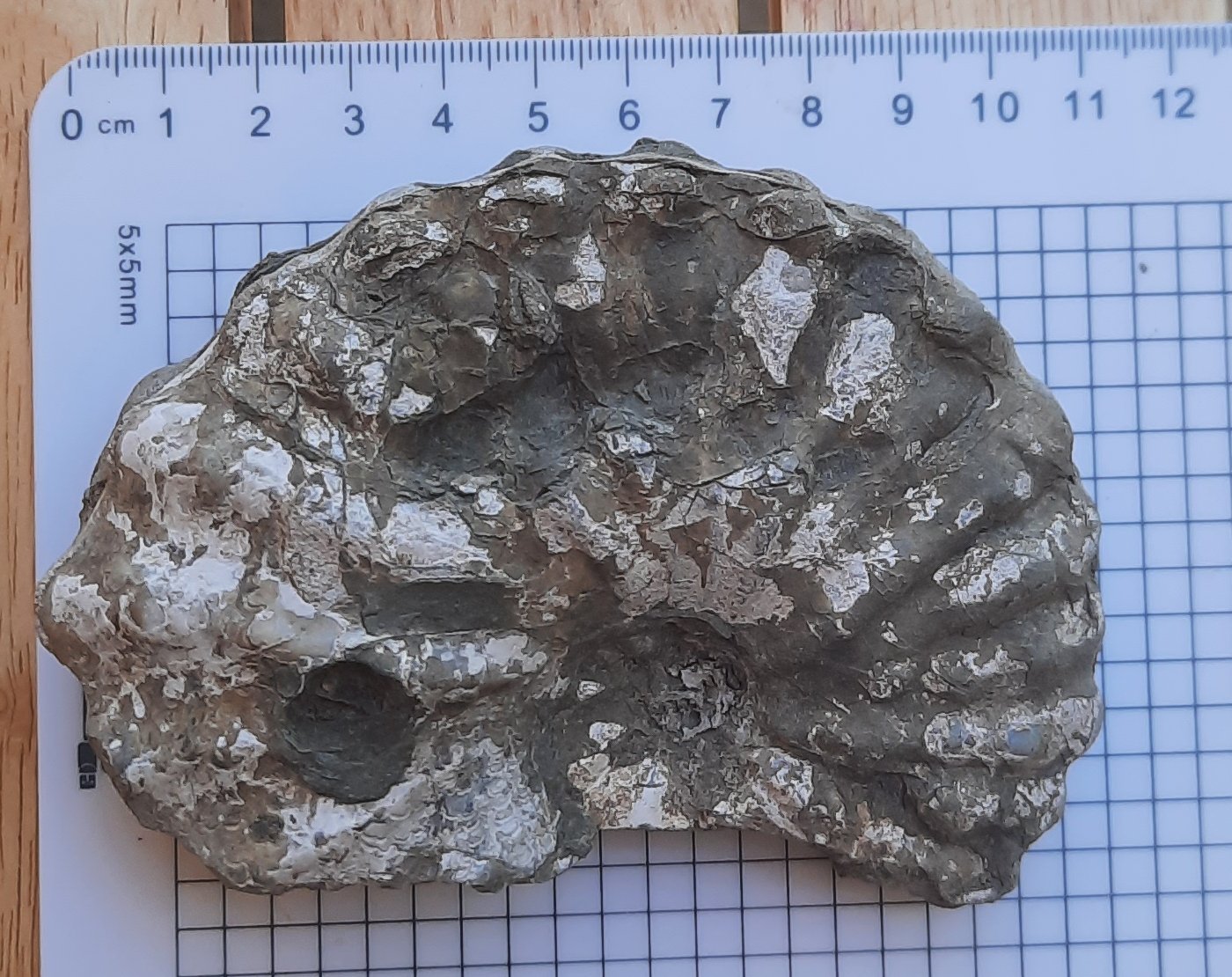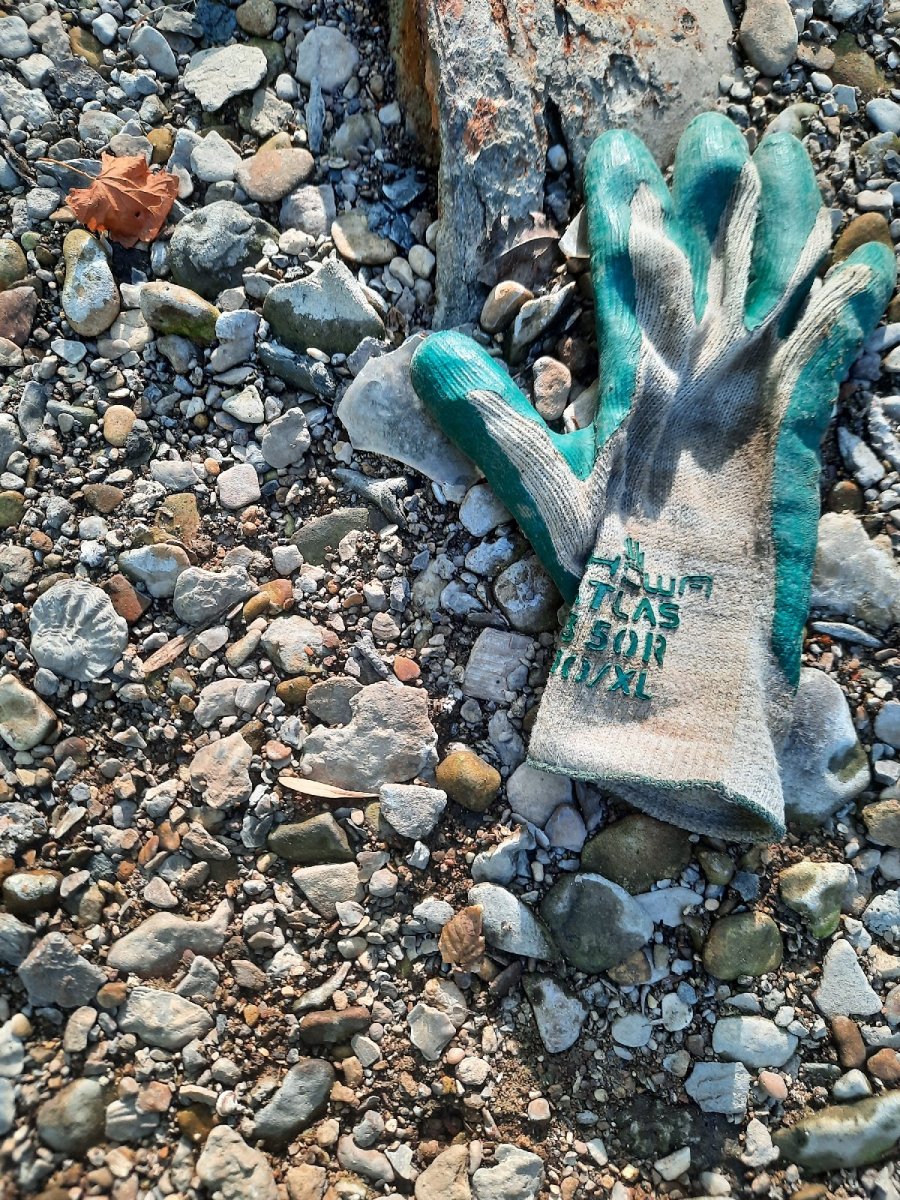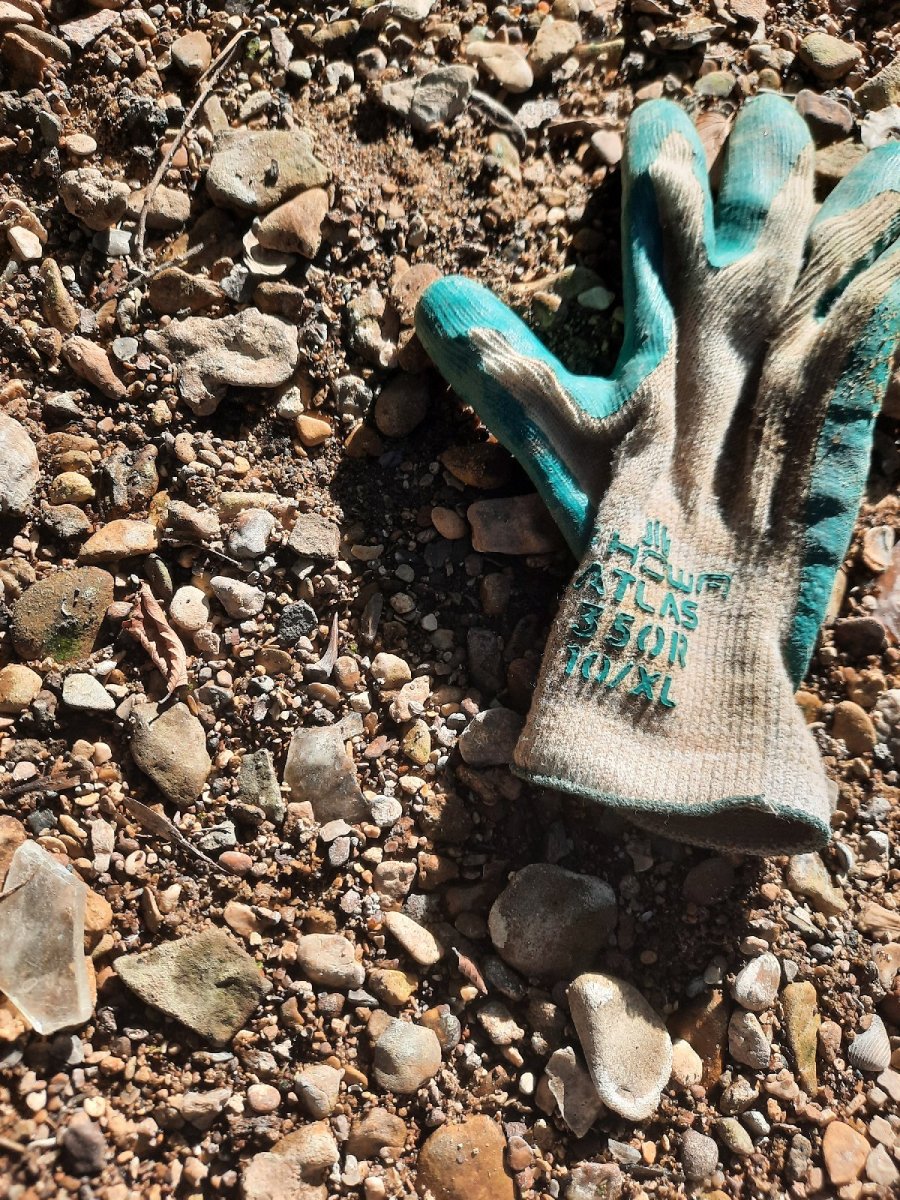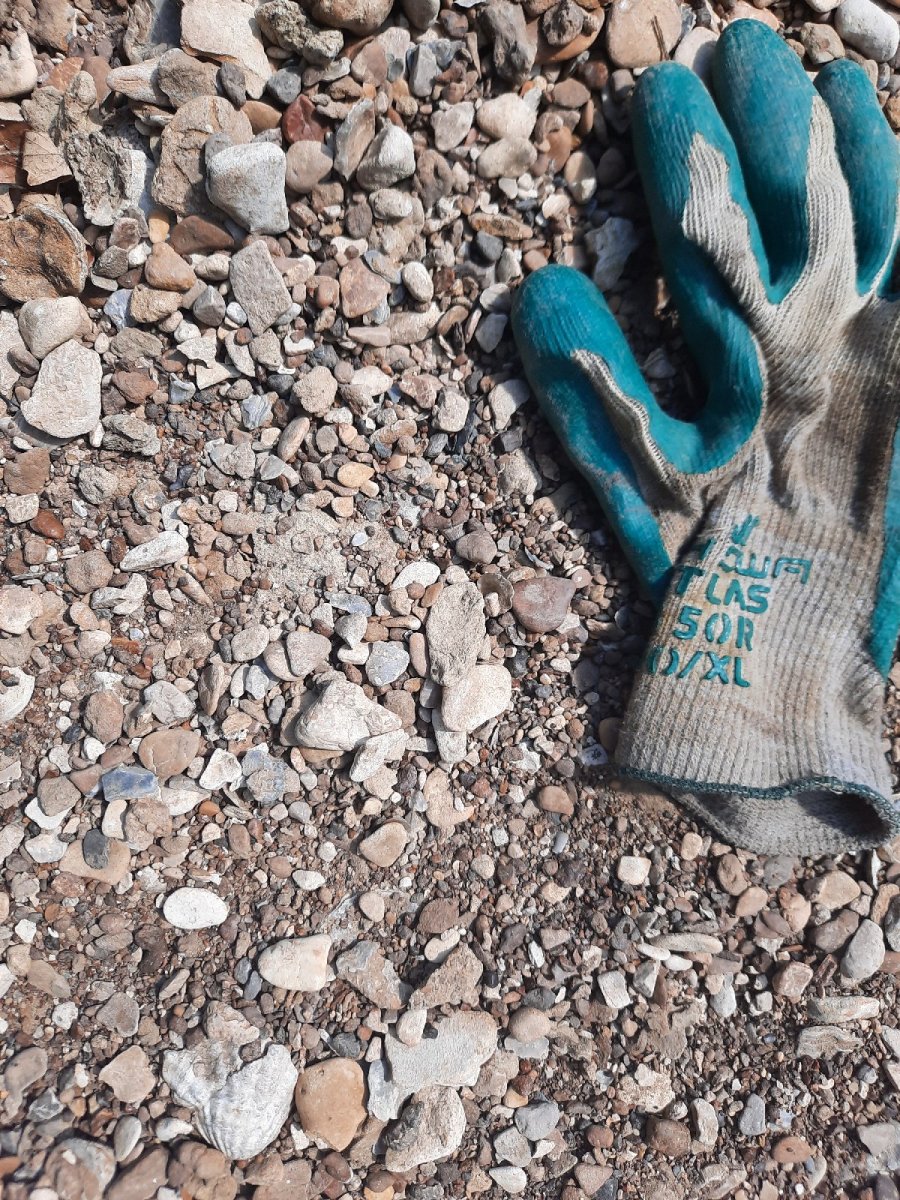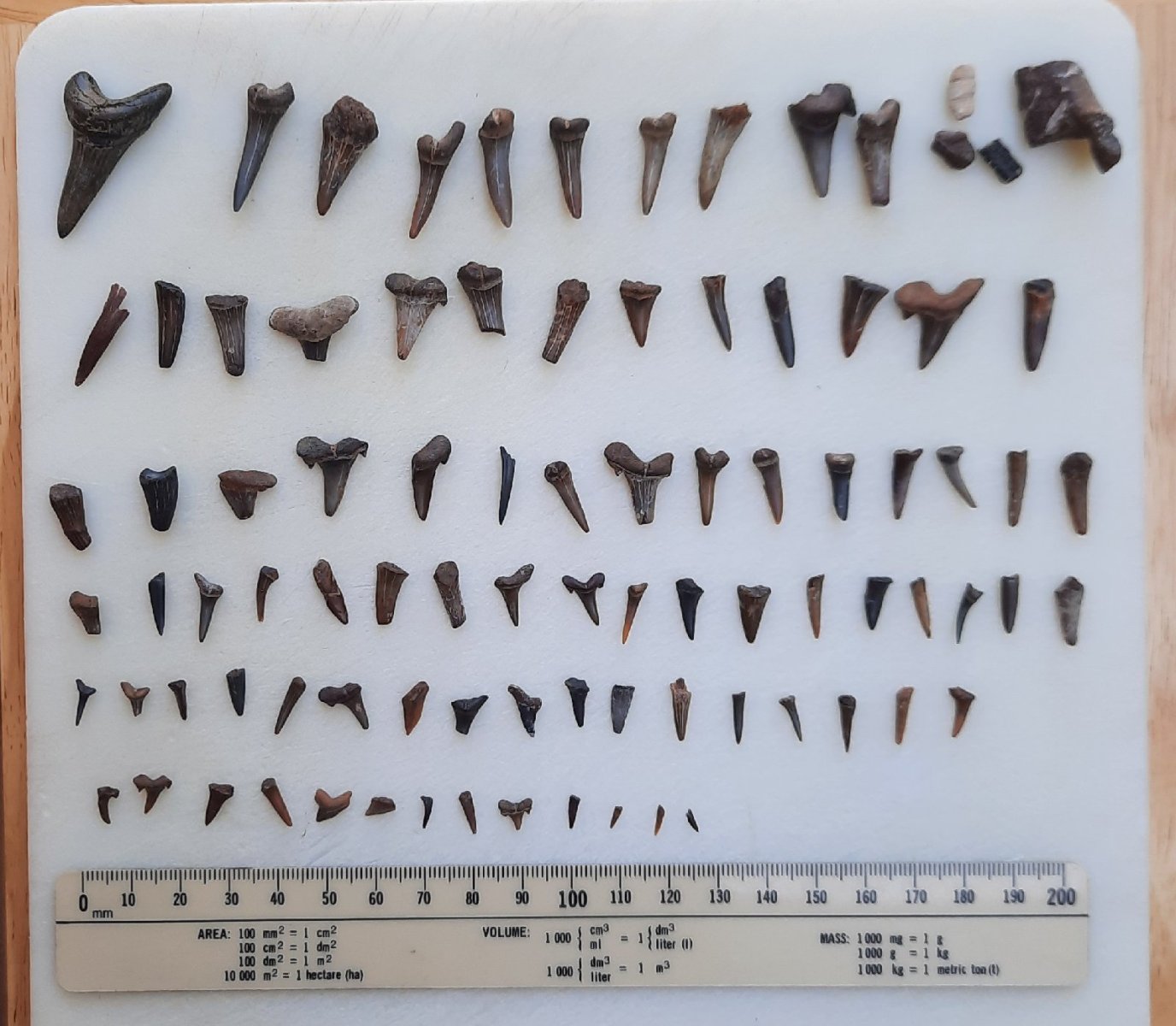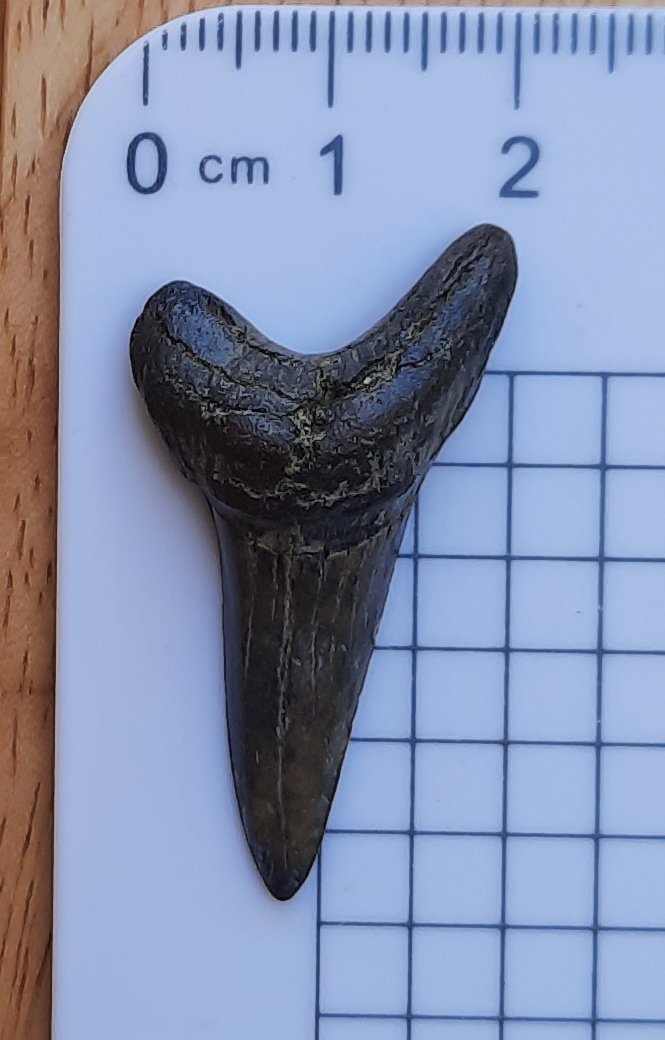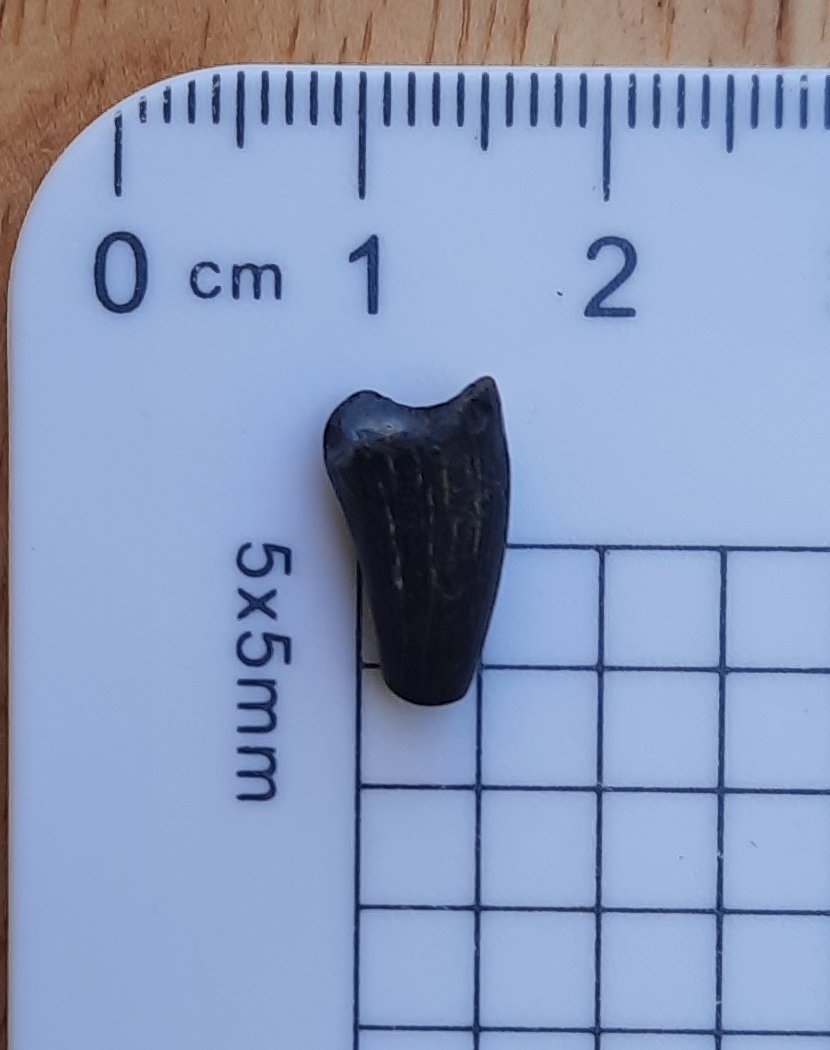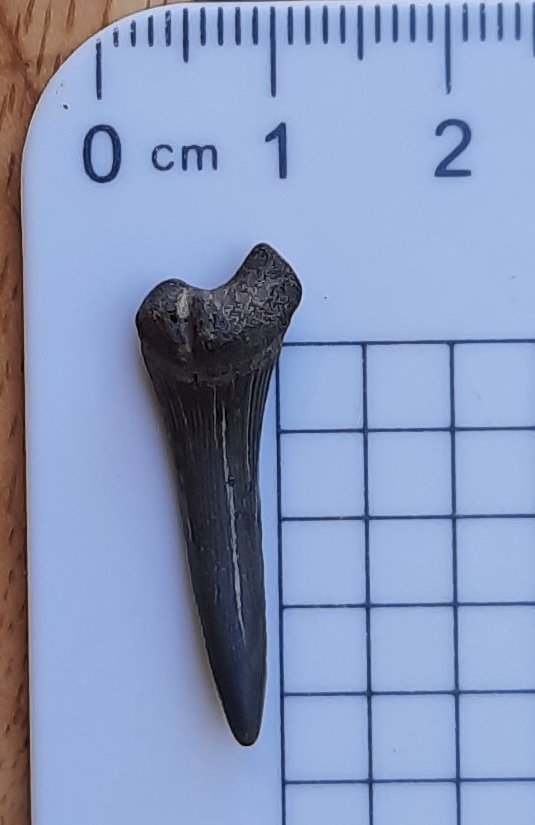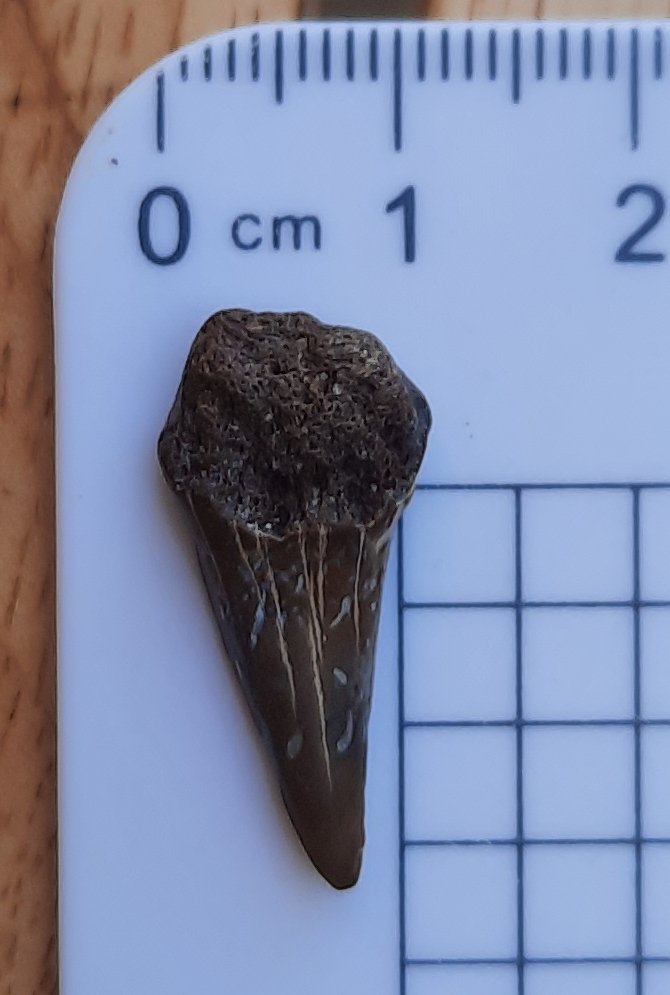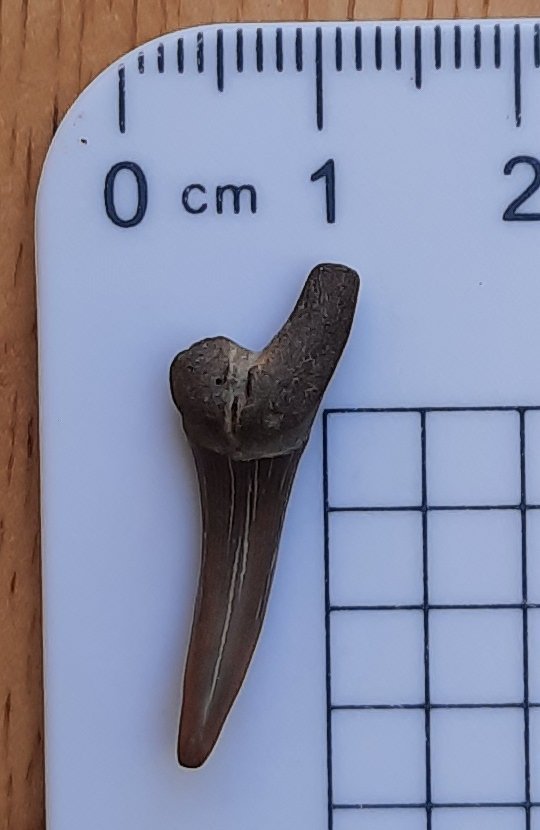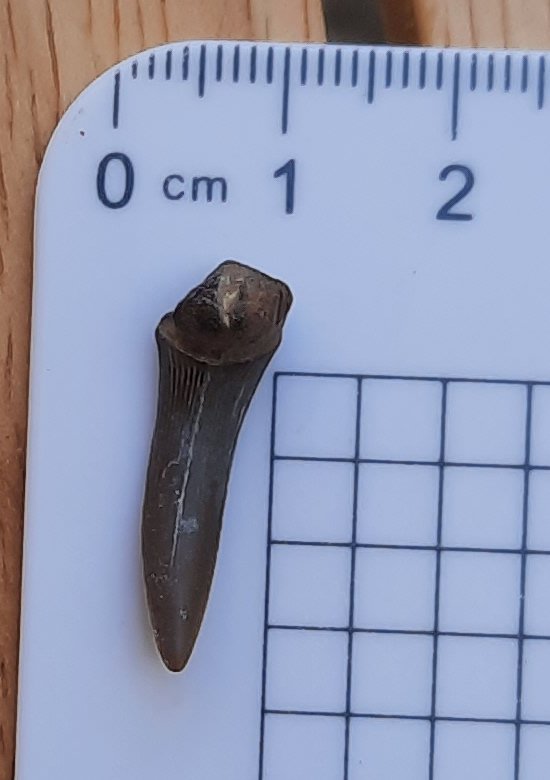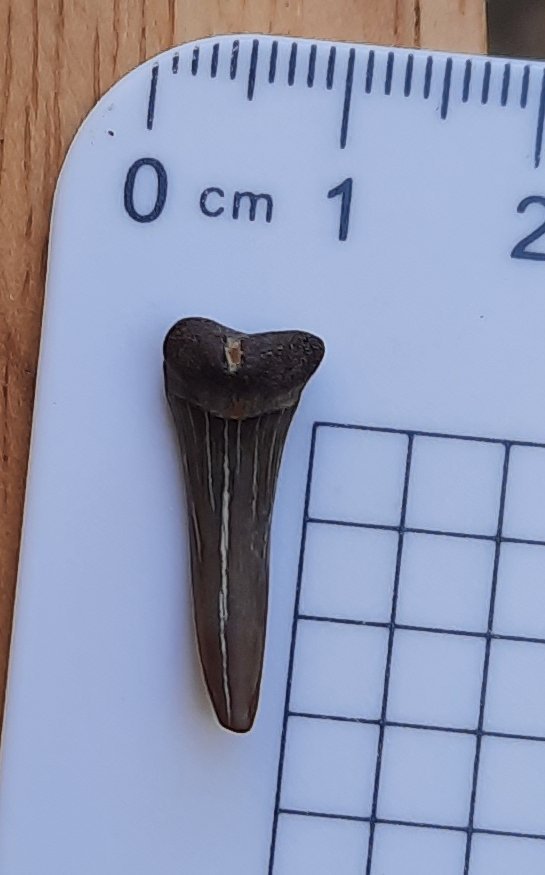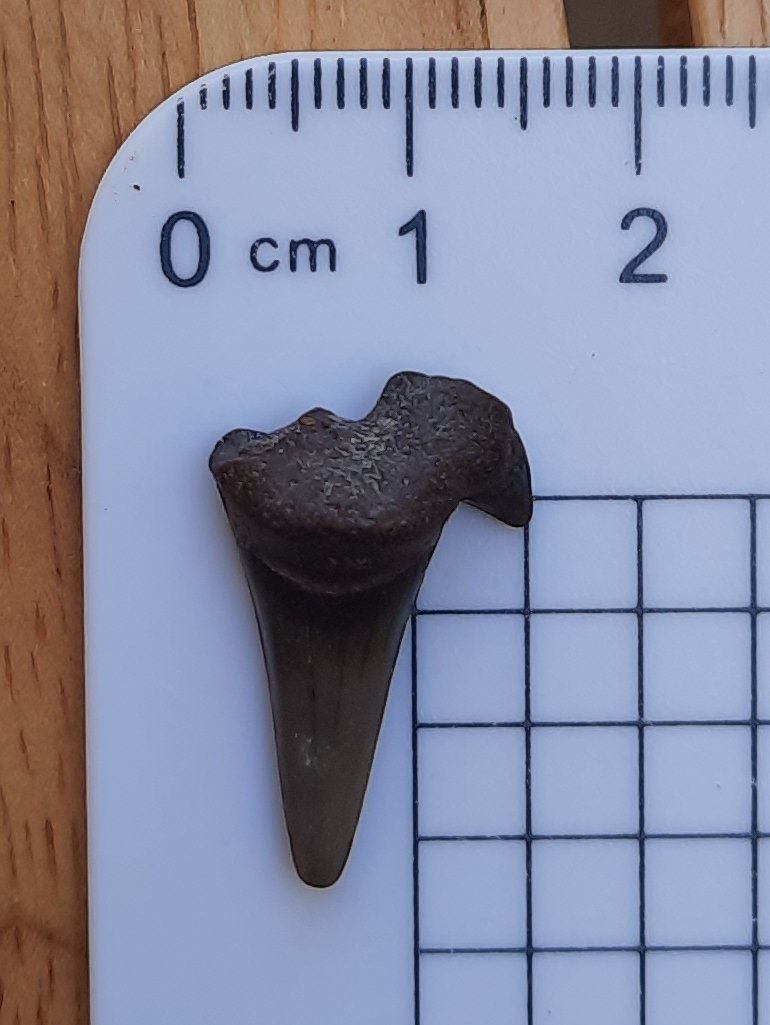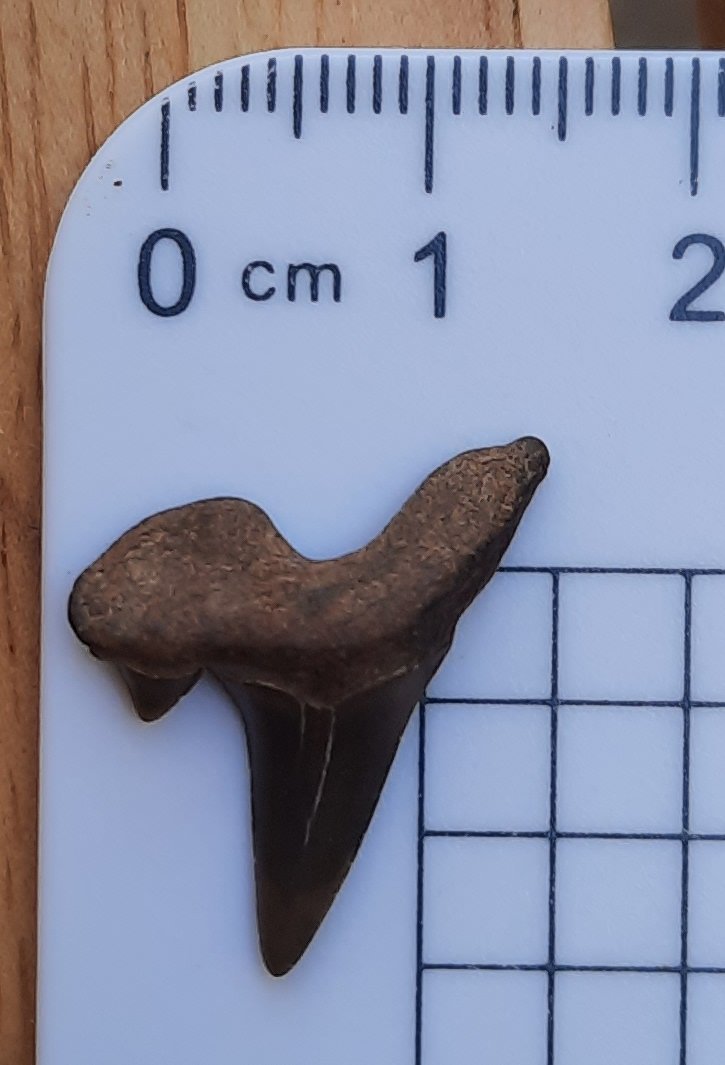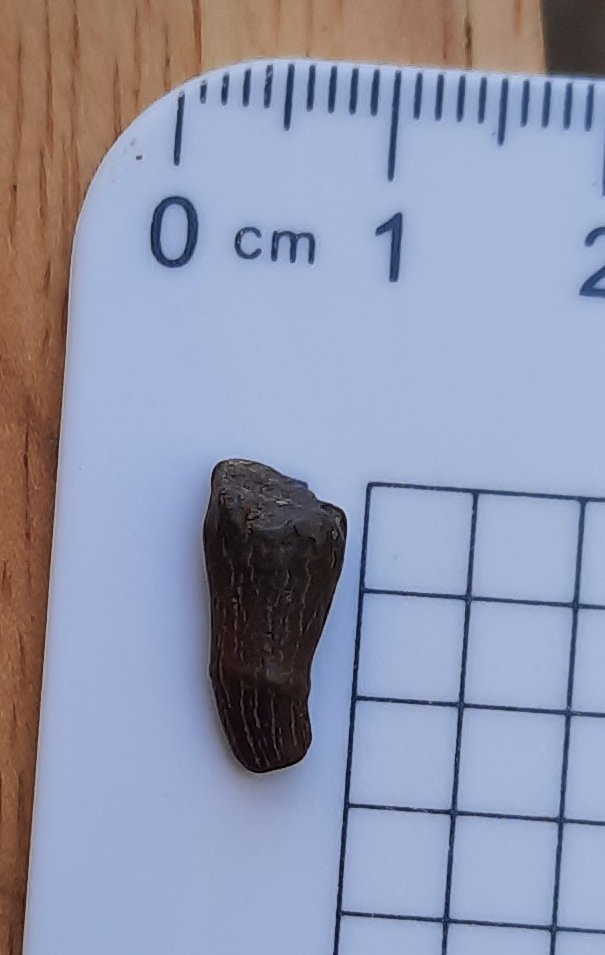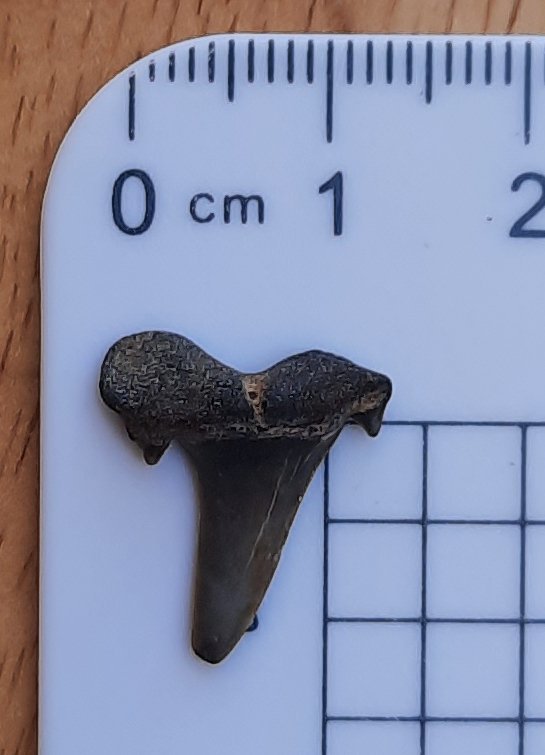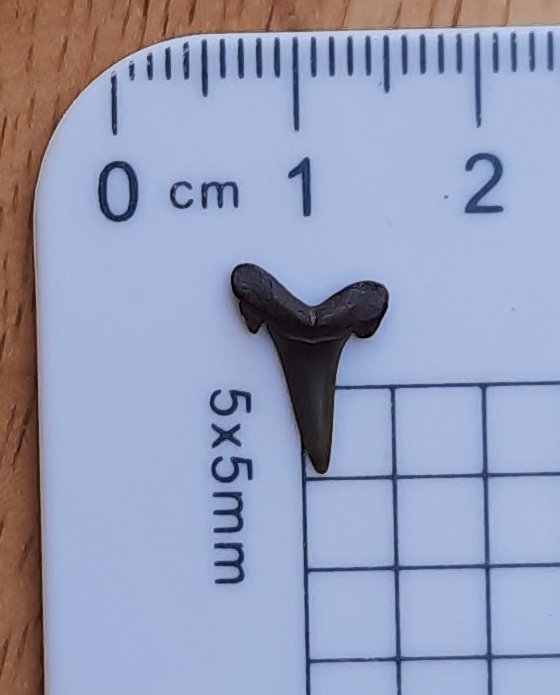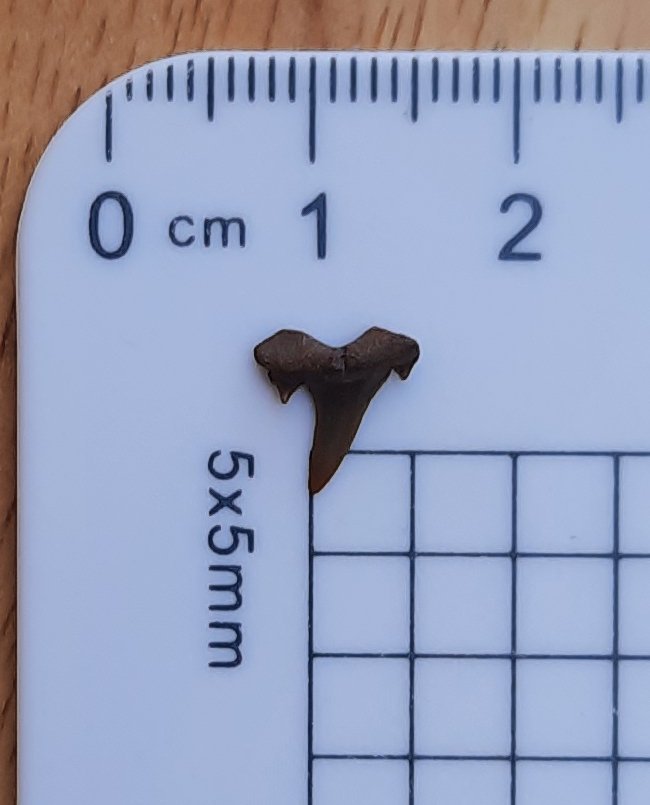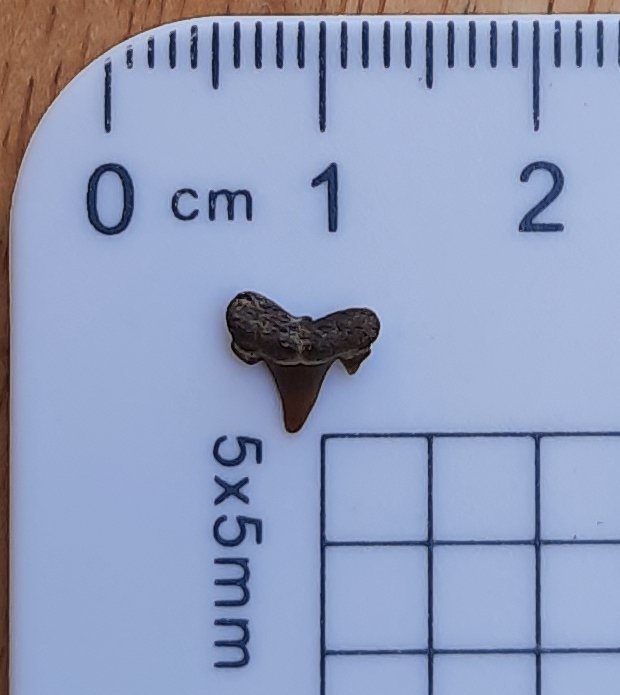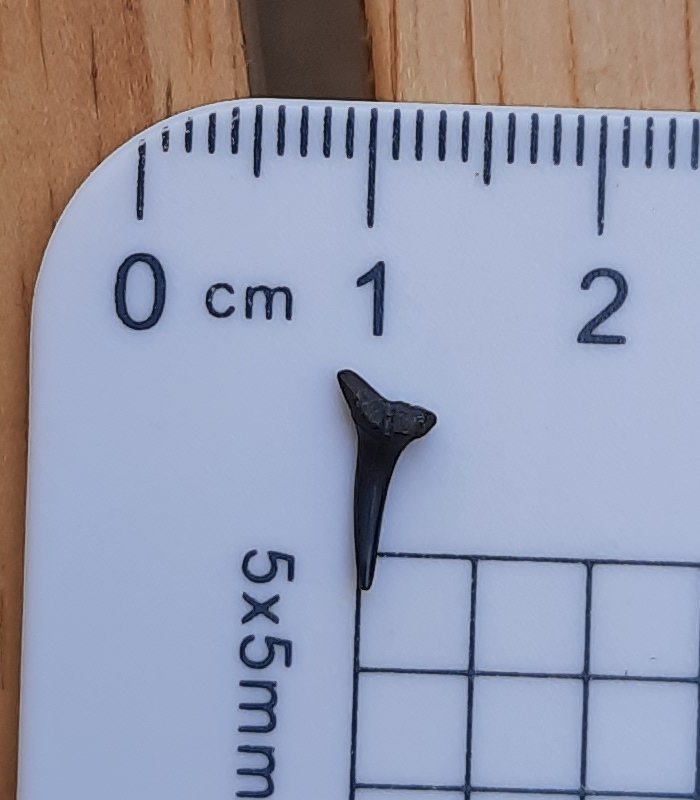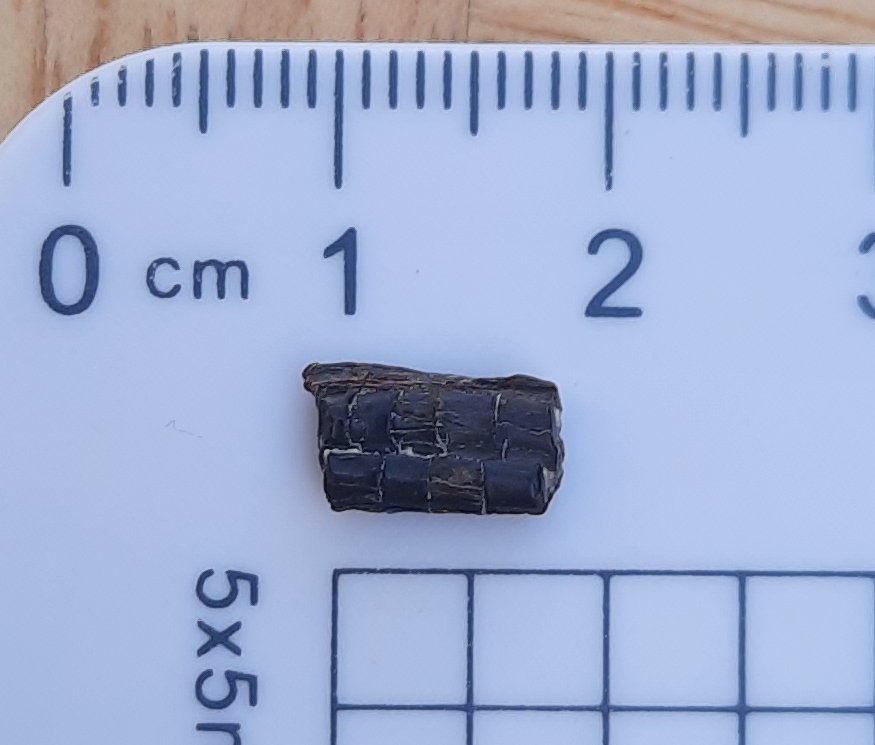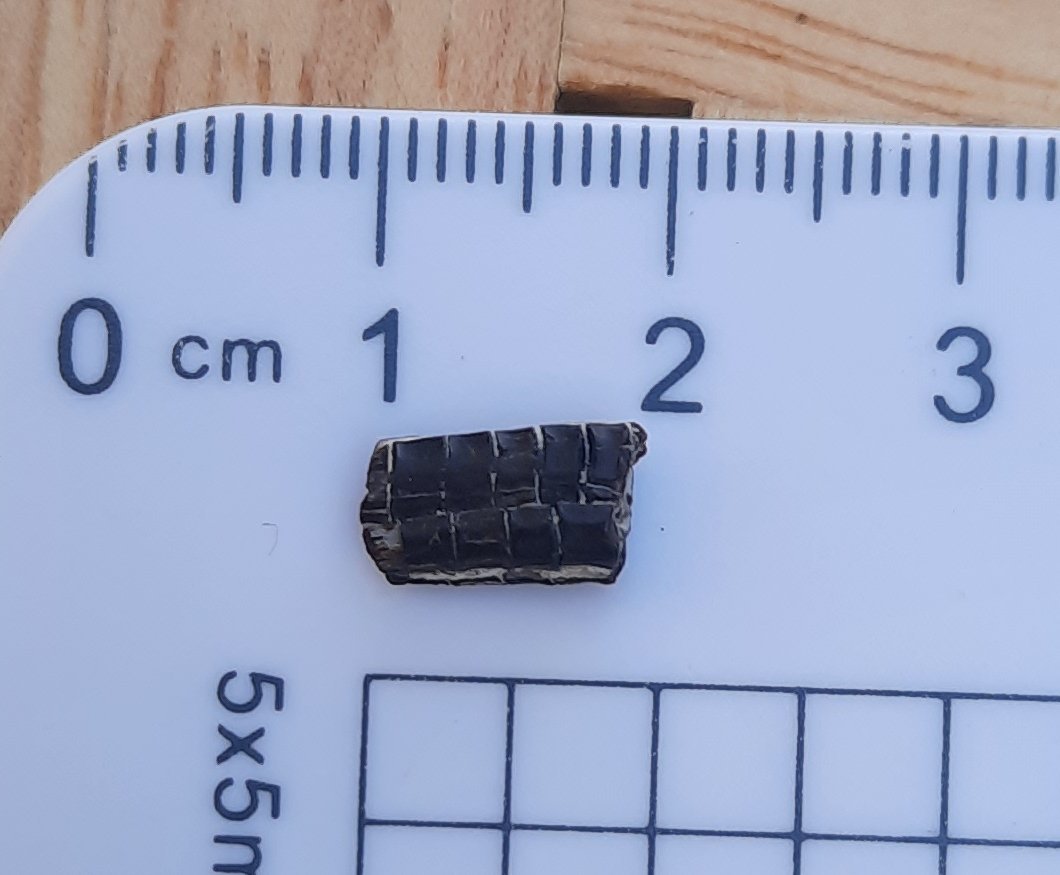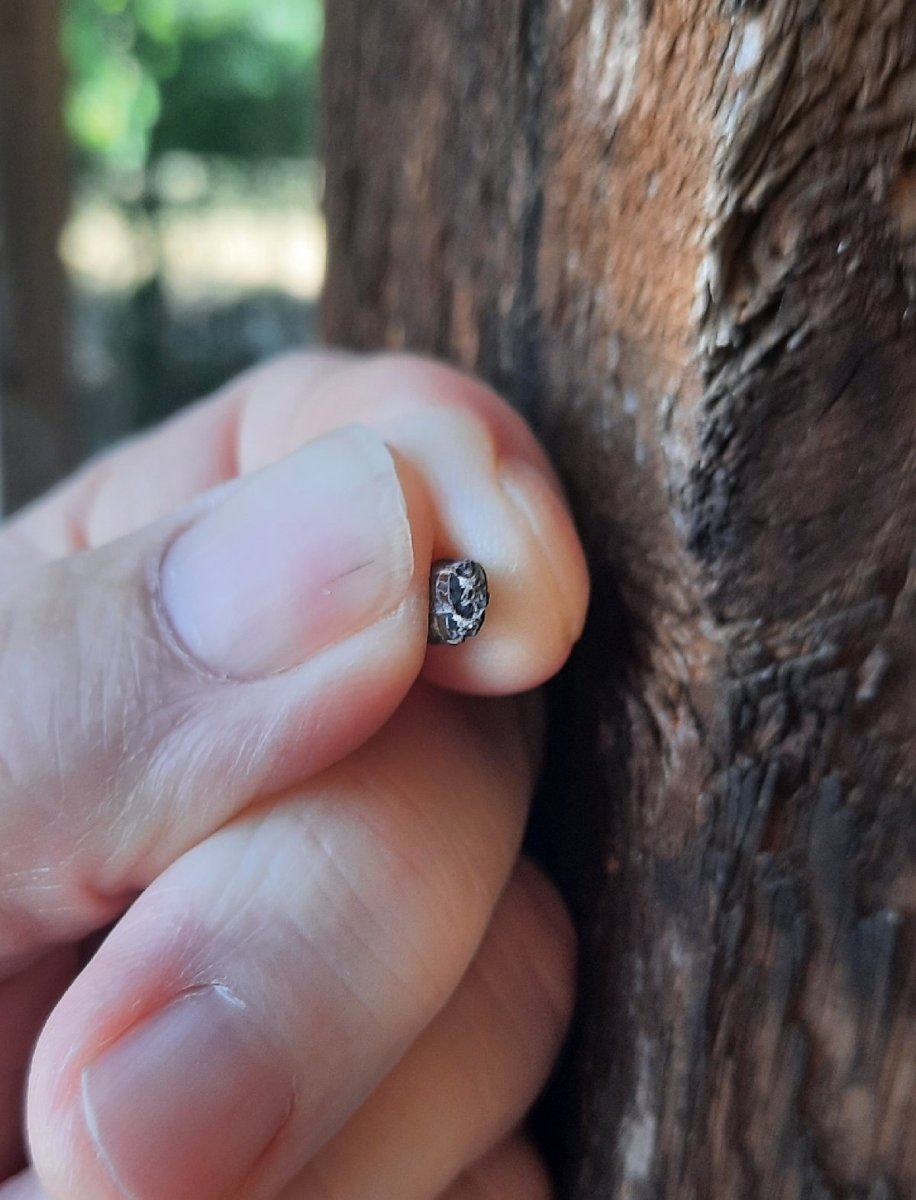I made a trip to a creek in Dallas County yesterday morning. This is an Eagle Ford outcrop. I had visited this creek once before in 2020. I only found a couple of things, but one was an ammonite I was really impressed with. I had found it in the edge of the water, and wondered if this might be a better site to hunt under low water conditions. With the drought we’re having right now, those low water conditions are here, so it seemed like a good time to revisit the spot. It’s not a large outcrop, so I didn’t worry about getting there too early. I just hunted a couple of hours, then headed home before the worst heat of the day.
The fossils aren’t hard to spot in today’s in situ photos.
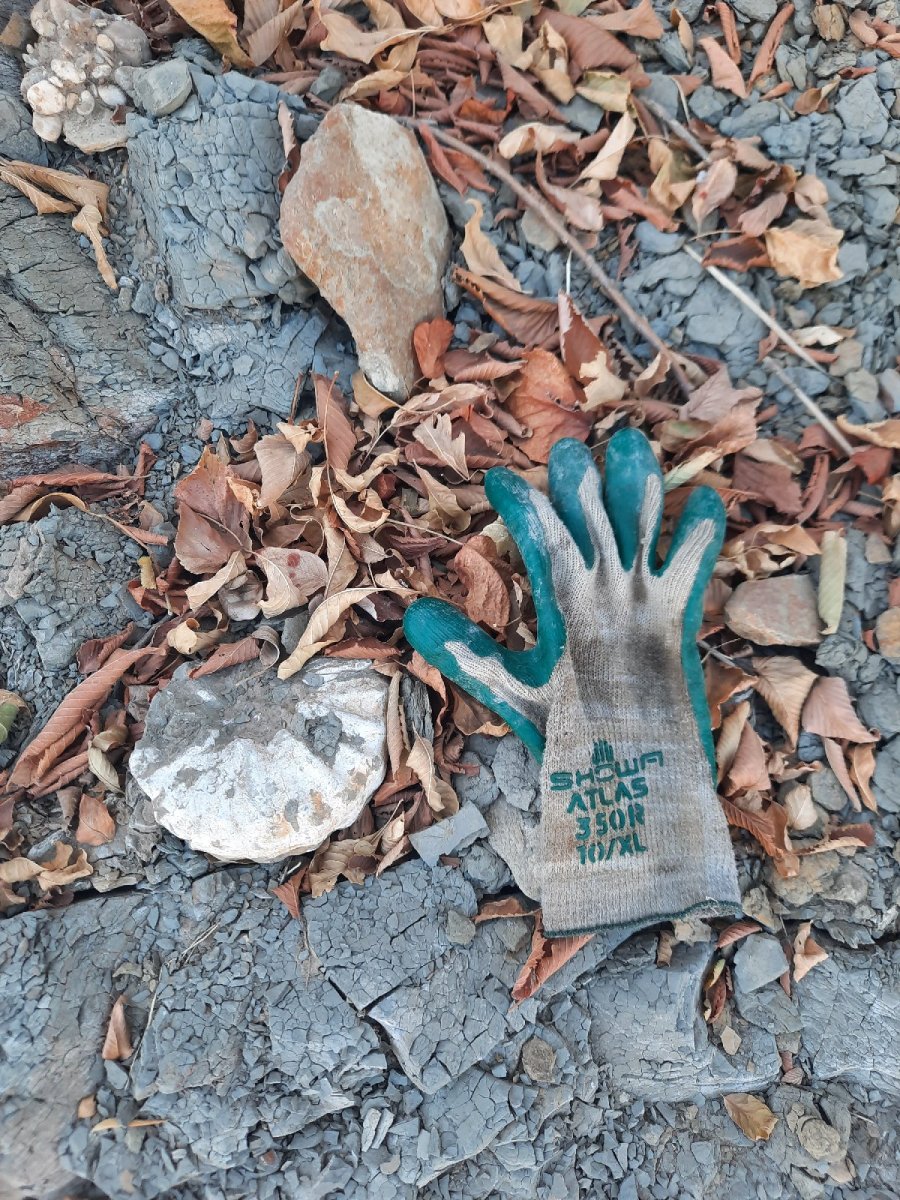
Here is what I brought home, minus one small ammonite that was soaking to aid in matrix removal.
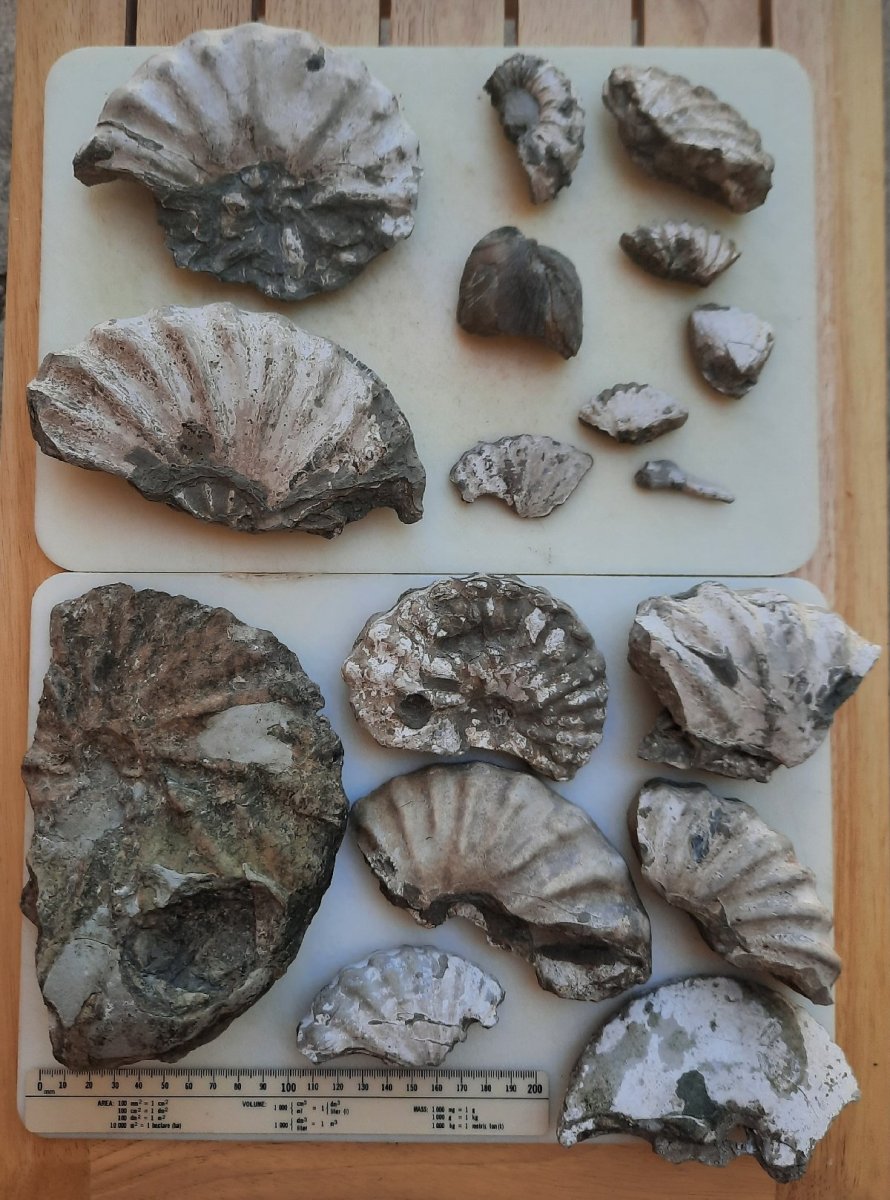
This largest ammonite is in pretty rough shape.
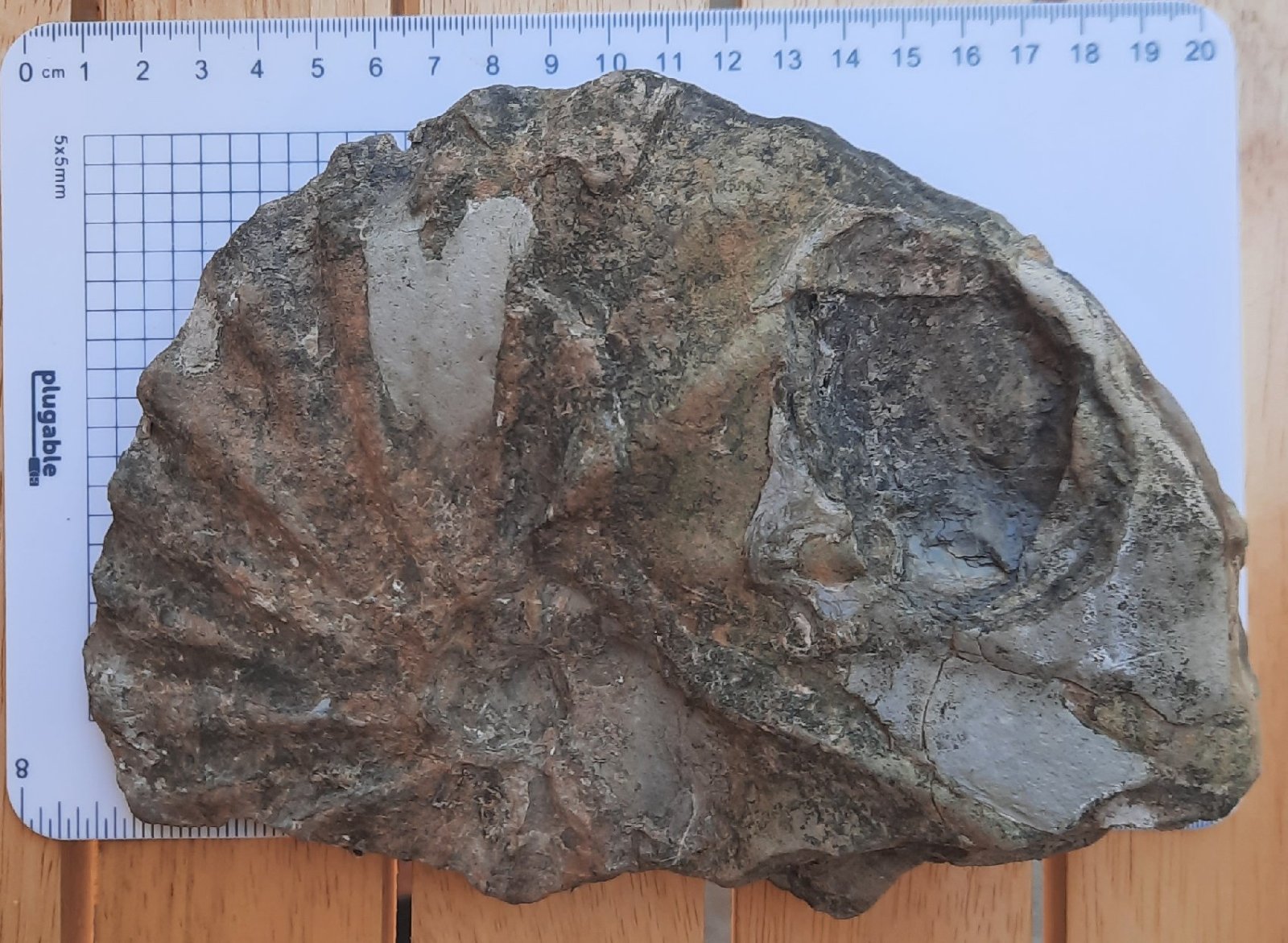
This ammonite with the smooth outside looks a lot like the big ammonite I found here on my first visit. I was guessing that one to be a placenticeras cumminsi.
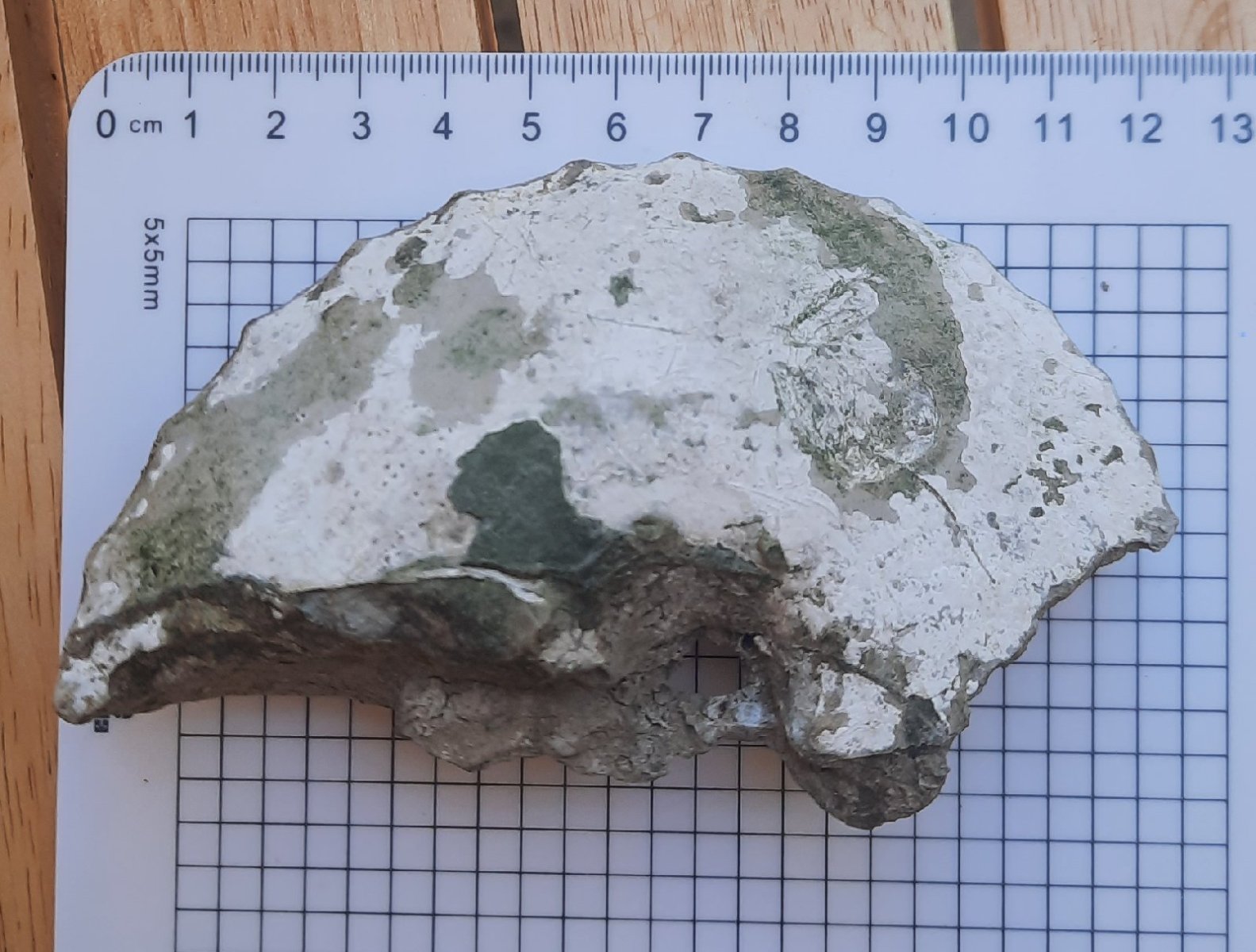
These two pieces almost look like they could have come from the same ammonite. Both would have been pretty large if complete.
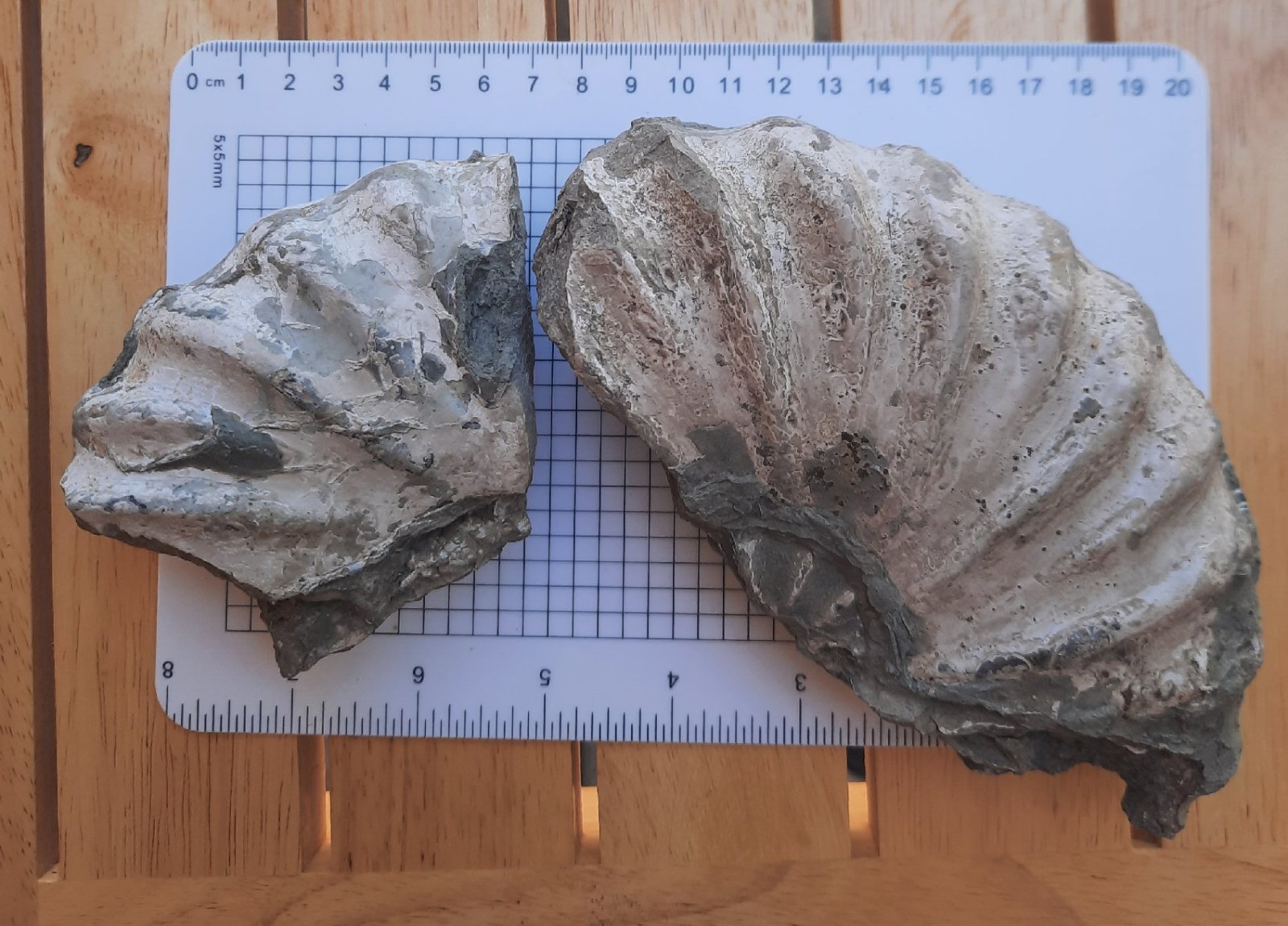
This one looked pretty good on this side. On the other side, not so much.
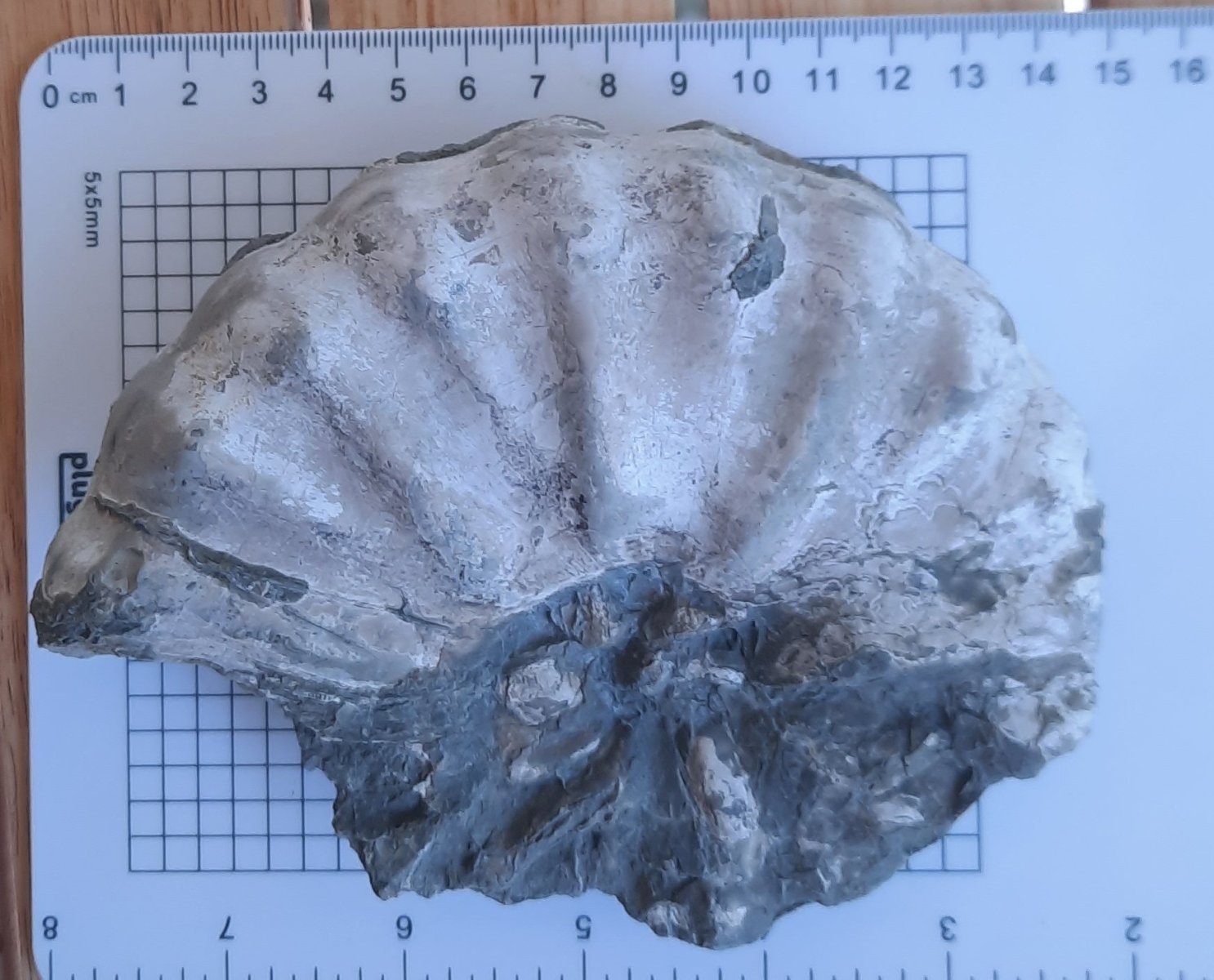
These two had very different ridges than the others. I haven’t had time to try and identify them yet.
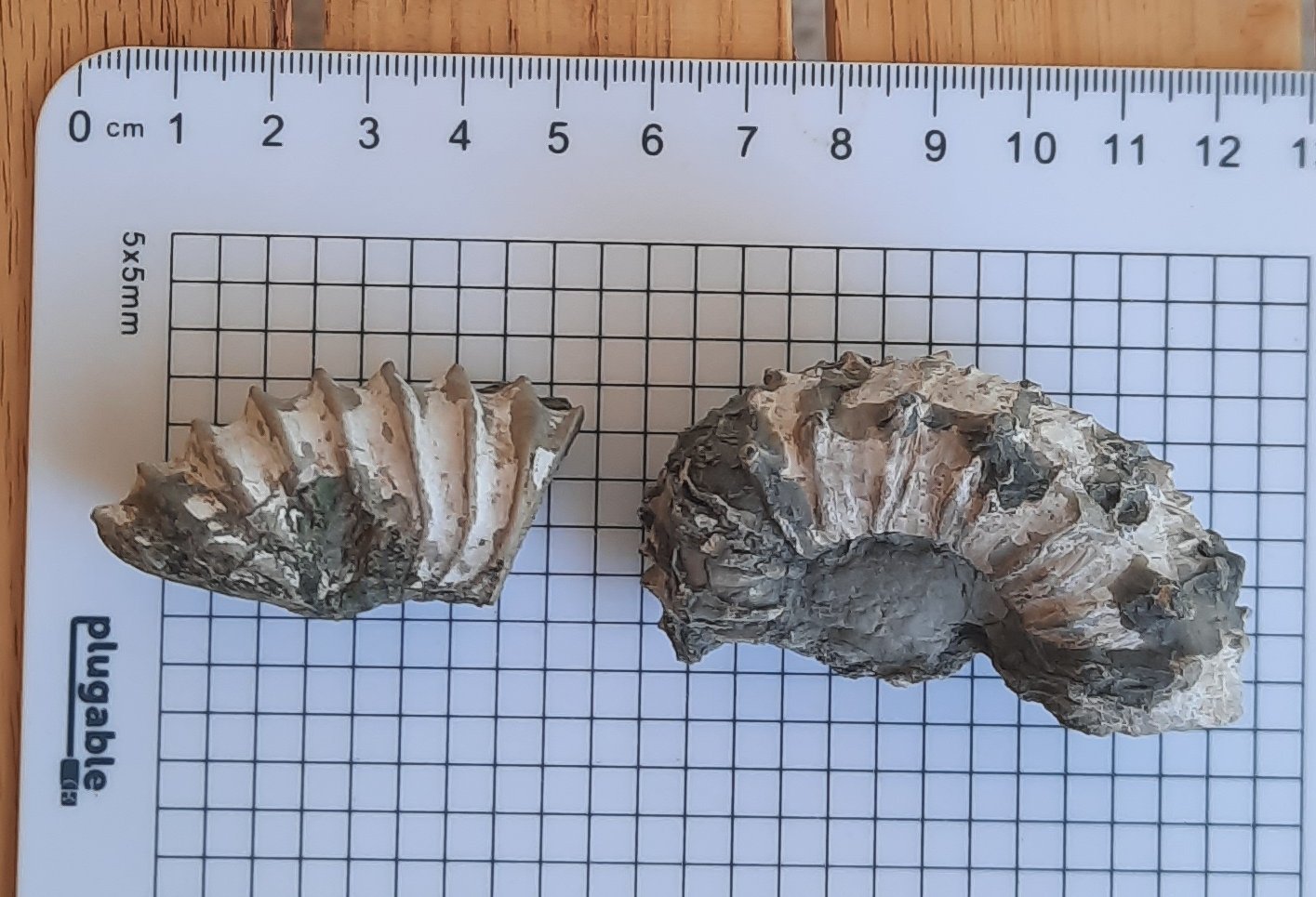
I’m still working on removing the matrix from this small one. One of the things I really like about the ammonites from this site is that they all seem to have lots of shell left. So many ammonites I find elsewhere are just rock, with no shell left at all. And to think there are this many ammonites to be found at a small site in the middle of DFW, within the Dallas city limits. You just never know until you look.
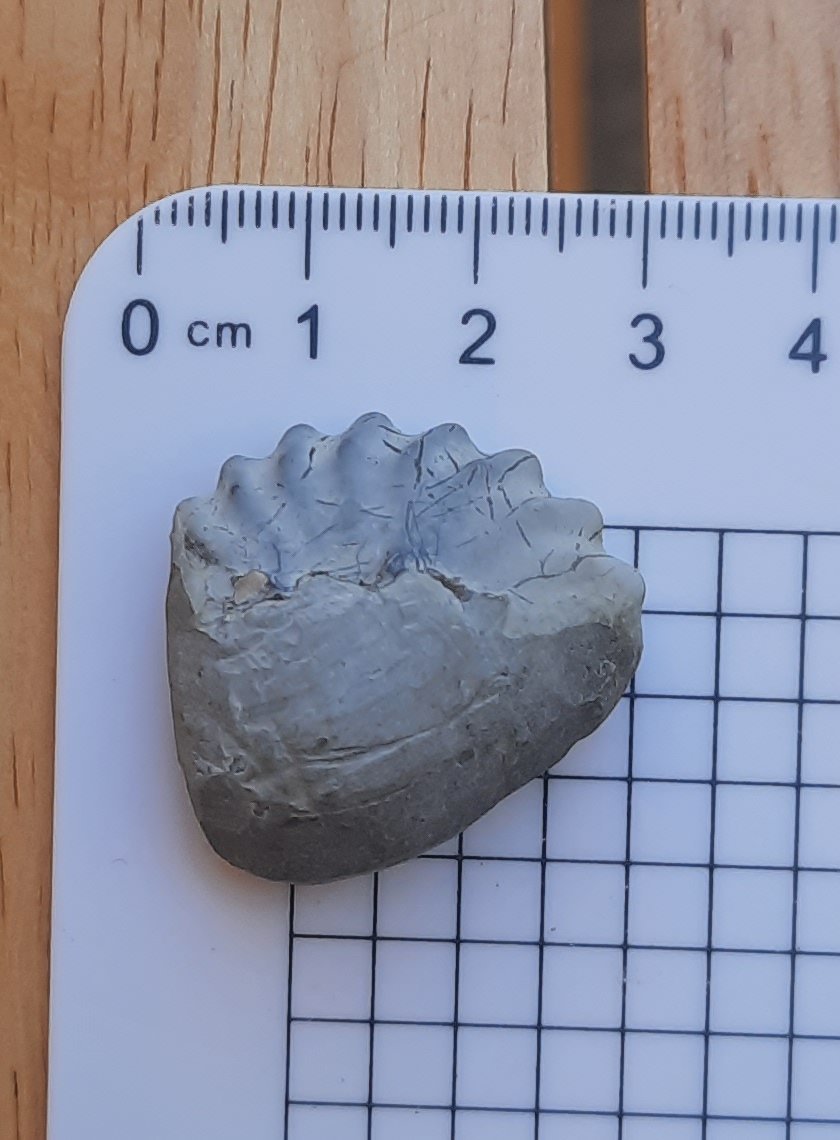
This piece has lots of shell too. An oyster, I’m thinking, but I’m not sure which one.
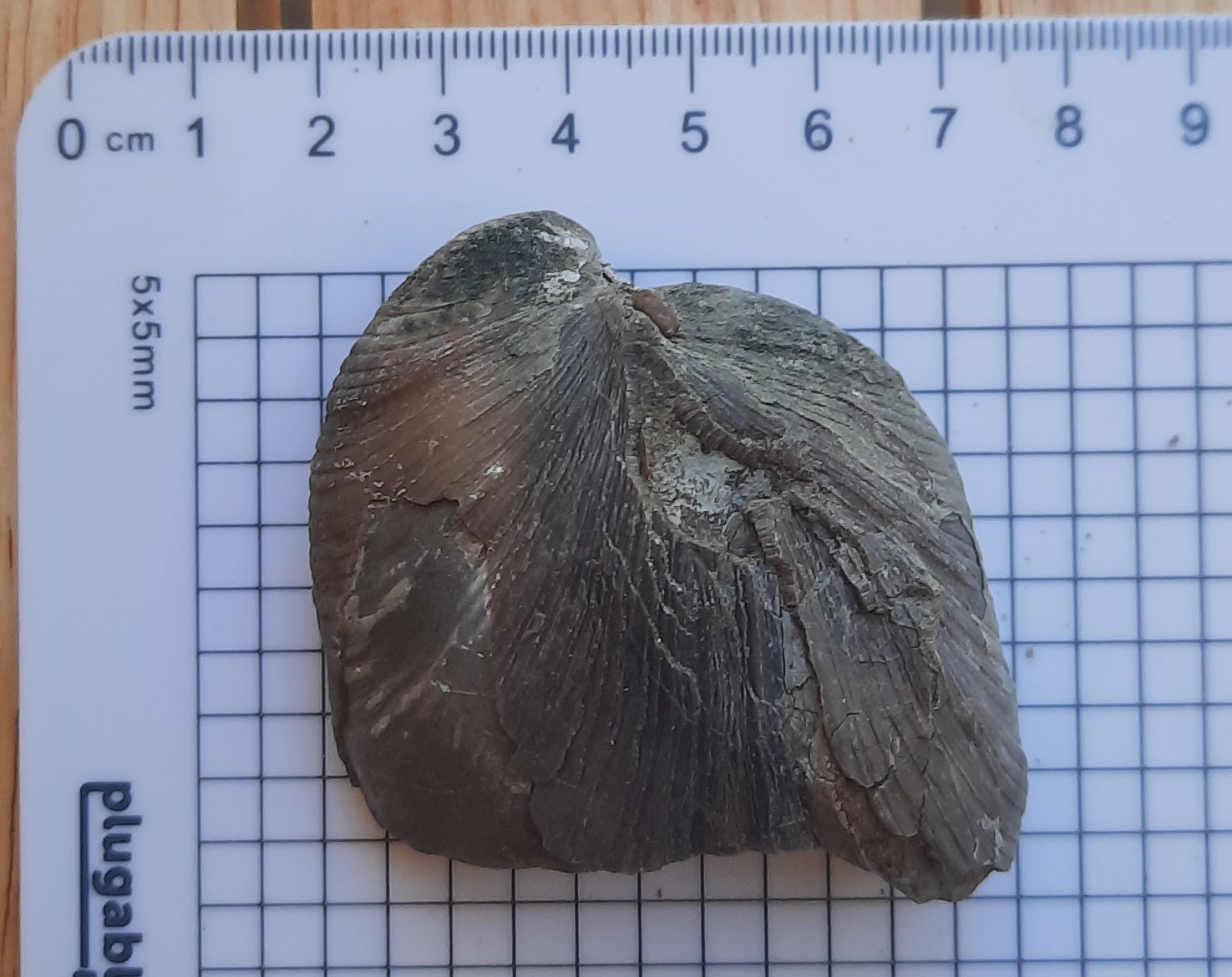
And then there’s this. It looks like it was just a round hollow tube shaped thin shell before the matrix distorted it. I posted in The Fossil Forum to get an ID. It’s a sciponoceras gracile, a kind of chamber-less baculite.
